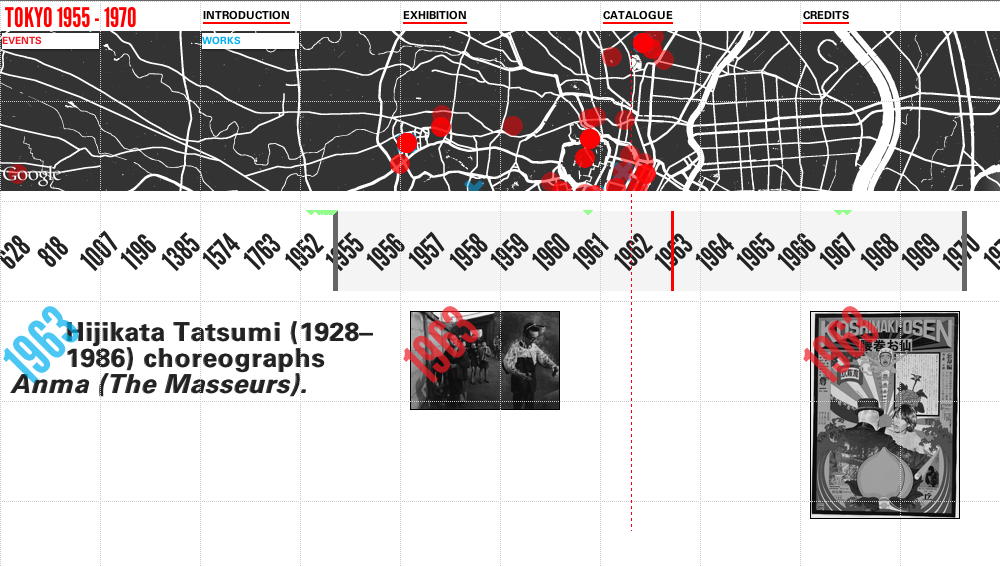“Tokyo 1955–1970: A New Avant-Garde,” currently on view at MoMA, goes to show that Modernism was plural — not a Western aesthetic exported across the world, but concurrent post-war global movements centralized in various urban “incubators” — an era of Modernisms.
Towards the end of the exhibition in the final gallery opposite masterful photographs by Daido Moriyama and Eikoh Hosoe, hangs a salon style installation of poster art by Tadanori Yokoo. To this day he is considered one of the most seminal figures in Japanese graphic design and painting.
Influences of the work, with its bold typography and sometimes garish color palettes, seem to trace back to American Pop Art and Psychedelia, but his layered complex imagery also has tremendous autobiographical and specific cultural resonance.
The museum describes Yokoo’s work as having, “an inimitable style that may be observed as a kind of topographical map of the art and cultural world of Tokyo at the time.”
Many of the posters were made in the mid-1960s, some the same year as the publication of the first Japanese translation of Clement Greenberg’s influential 1939 essay “Avant-Garde and Kitsch.” You can pick up that tidbit and other great contextual information off their sprawling, interactive HTML5 exhibition site, where you can sort through the collection by place, work on view or related landmark events.
“Tokyo 1955–1970: A New Avant-Garde,” Various Artists, Nov 18-Feb 25, Museum of Modern Art, New York


